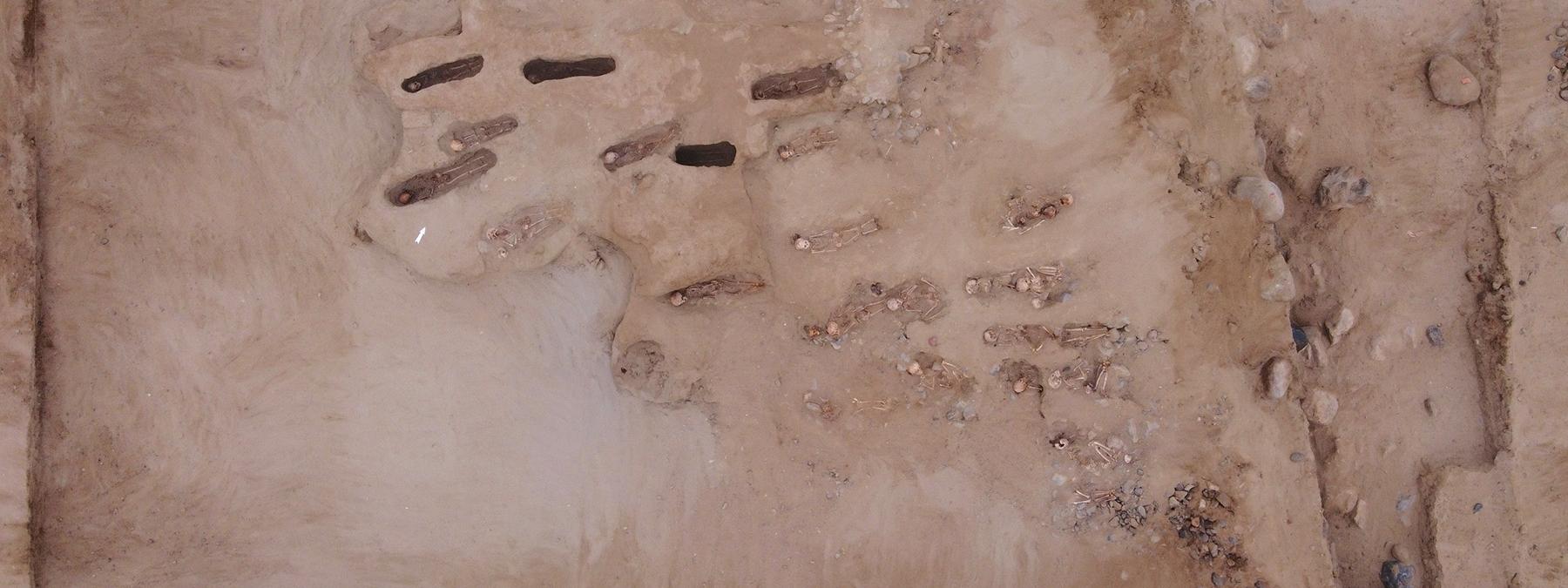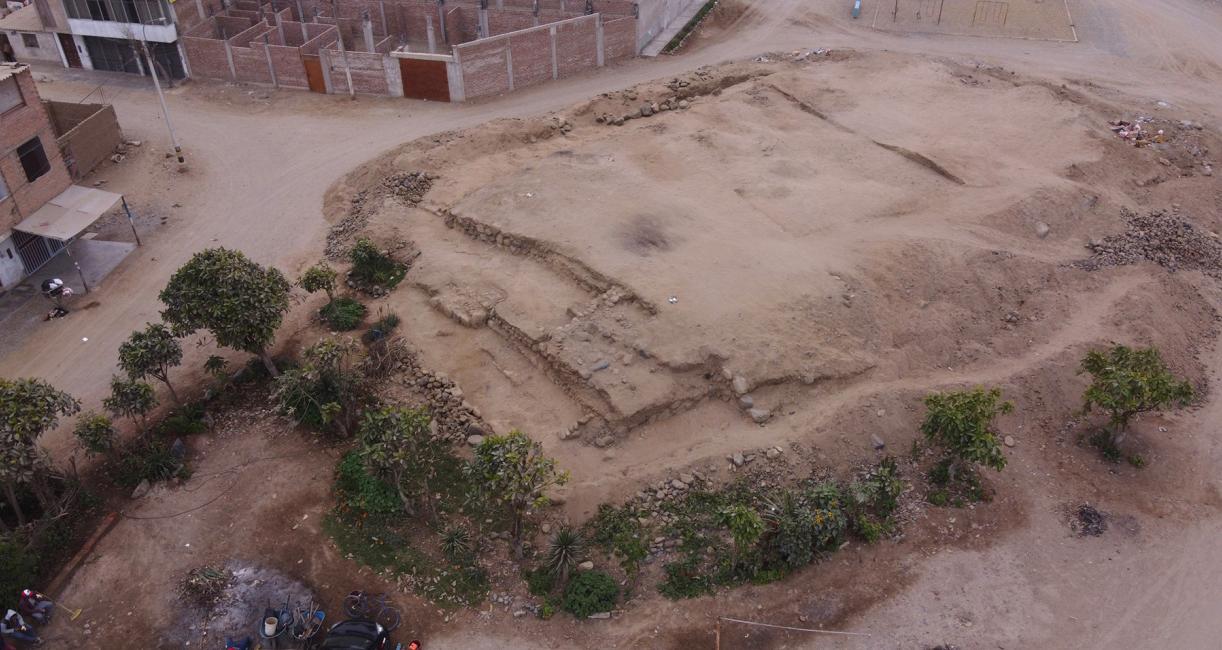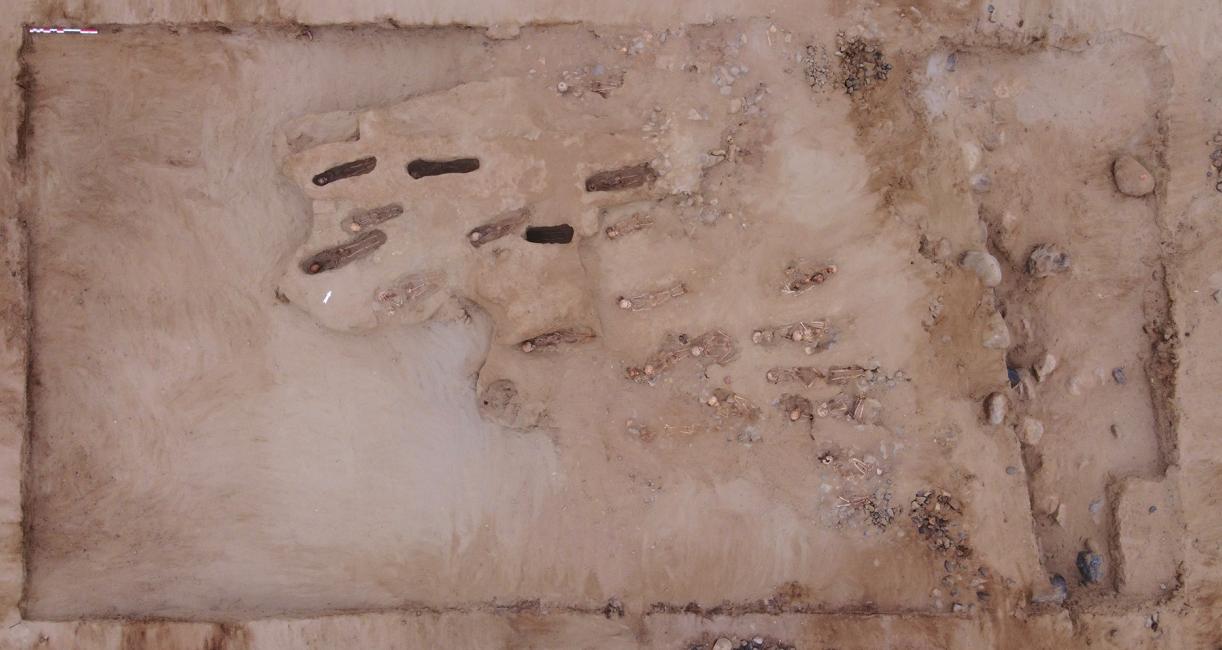




Drone image of Pampa la Cruz Monticulo (Photo courtesy of Proyecto Arqueológico Huanchaco)

Professor Richard Sutter

Drone image of Pampa la Cruz Monticulo (Photo courtesy of Proyecto Arqueológico Huanchaco)



PFW professor digs what Archaeology Magazine considers a top discovery of this century
By Blake Sebring
October 5, 2023
Clearly, 76 more years is a pretty long time to stick around on any ranking of things taking place in the 21st century, but an archaeology project with a direct link to Purdue University Fort Wayne has already made a compelling argument for permanent inclusion on one such list.
When Rick Sutter, PFW professor of anthropology, met Oscar Gabriel Prieto in 2011, they were working on an archaeology project on the north coast of Peru. They had no idea their collaboration on another nearby project would soon achieve international acclaim, being called by Archaeology Magazine in 2021 one of the “Top 10 discoveries of the decade.”
National Geographic, CNN, and Smithsonian Magazine have also highlighted their work at the Huanchaco Archaeological Project, and Discover Magazine described it in 2022 as one of five interesting archaeological discoveries within the last decade.
With Prieto, an assistant professor at the University of Florida and National Geographic Explorer serving as project director, work has uncovered the graves of nearly 500 children ritually sacrificed by the Chimu Empire of the Moche Valley during six periods between approximately 1000 and 1500 A.D. More sites are being uncovered in an area covering 5-6 square miles near Peru’s National University of Trujillo.
Sutter, who has taught at PFW since 1998, studies the teeth of the children to discover genetically influenced characteristics. His work has proven the Chimu people brought their victims from nearby geographic areas, probably captives from other conquered groups.
“Other collaborators’ research indicates the kids were eating mostly fish and shellfish until the last three months when they started eating lama meat and corn,” Sutter said. “But the corn mostly wasn’t eaten as corn but was consumed as beer.”
The project includes more than 25 academics from around the world doing specialized analysis, Sutter said, and Prieto indicated the general theme is ritualized violence and human sacrifice. Others’ research indicates the children were probably drugged before their hearts were removed, Sutter said, at specific times, such as the death of a monarch or inaugurations. The sacrifices generally happened every 40-to-50 years, with the bodies buried facing specific directions for as yet unknown reasons.
Since 2001, Sutter has visited the Trujillo region more than 25 times, including working on his doctoral dissertation and for sabbaticals. He plans to return in spring 2025.
“Dr. Sutter’s work is very important in my project, and his research is helping us better understand the population diversity among the sacrificed children in a diachronic perspective,” Prieto said. "I am very pleased to know him and that he is collaborating in my projects with his biodistance approach.”
One of the project's senior researchers, Sutter's work supported Prieto’s hypothesis that the children came from farther away as the Moche civilization expanded.
Sutter is currently working with PFW graduate student Tiffany McBride to further analyze the data on which populations the children came from.
Prieto and Sutter have collaborated on two published papers, two manuscripts, and more than 10 presentations, with more planned and no end in sight. As additional sites are discovered—almost whenever a worker starts to dig in a different location—new ideas demand further examination.
“It’s exciting, and with more data you can answer more complex questions,” Sutter said. “When you have just a single thing, you can’t really compare it to other things to answer questions. As you get more information, maybe these children at the different locations represent sacrifices for different reasons.
“The problem is there are so many different angles that can be looked at. It’s like an itch. There’s a lot more stuff we’re not sure of.”
Maybe the ultimate question is what the Chimu people did with the hearts.
“We don’t have descriptions of them consuming them,” Sutter said. “It could have been for divination purposes; it could have been using the blood to make offerings to Mother Earth; Lord only knows.”




